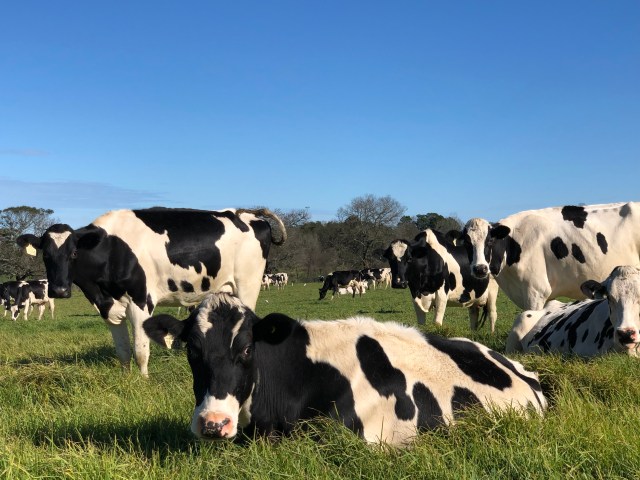Home \ Knowledge Hub \ Focus on \ Focus On… Lumpy Skin Disease – a practitioner’s take from South Africa


01 May 2018
Focus On… Lumpy Skin Disease – a practitioner’s take from South Africa
SHARE

DR TOD COLLINS
BVSc, MRCVS (Retired), JP, Private practitioner at Underberg Veterinary Surgery cc, Underberg, South Africa
Background and first encounter with the disease
I graduated from Onderstepoort in 1973. Having been raised on a farm in a dairying district, I was aware of the annual immunisation of cows against lumpy skin disease (LSD). In fact, I must have injected hundreds on our own farm and in herds where I worked during school and university holidays in the 1960s. We administered the vaccine into the dewlaps because large swellings were common afterwards, and when given on the side of the neck the sensitive cows would spend a few days with a hideous swelling and “squiff necks.”

When I settled in Underberg as a young vet in 1976, we recommended that all dairy calves be immunised with 5ml of a live vaccine at 6 months of age, eliciting a life-long immunity. We also recommended beef bulls be vaccinated, knowing that clinically affected bulls could suffer permanent infertility should lumps form in their sperm ducts. We did not believe beef cows and oxen would suffer or lose productivity unduly were they to become infected, so vaccination of them was not urged.
History of lumpy skin disease in Underberg

I must have injected hundreds of cows against lumpy skin disease during school, but back in my early practice in Underberg cases of clinical LSD were irregular, and the disease wasn’t taken seriously. It took a severe outbreak to shatter this naivety.
Cases of clinical LSD—believed to be caused by the milder Allerton, and not the Neethling strain—were an irregular observation, and the disease wasn’t taken very seriously. In about 1985, my brother’s Holstein herd suffered an outbreak of severe LSD. It shattered my naivety and nearly shattered his farming enterprise. He was milking around 160 cows in the highly productive Ngangwana Valley, and I recall we destroyed 30 (thirty!) of the most severely affected. Others had died.
As an aside, it was in this same valley that in 2009 the first cases of Rift Valley fever (RVF) were encountered, and the epidemic spread across the province. The following year the country woke up to a national pandemic of RVF.

Clinically
The LSD sufferer cows were extremely sick. Milk production plummeted enormously and some cows died acutely, but the majority developed extremely swollen legs. This phlegmosis often ruptured, leaving gaping wounds with subsequent complications. Cows became downers. After the initial outbreak had subsided, we experienced:
- Cows withering that either died or were destroyed when lesions in tracheas and lungs became life-threatening
- Cows that became slow or impossible to milk because lumps that had formed in the teat cisterns acted as valves/plugs. Surgery was done on a great many to “remove peas in the teats”
Treatment, then and now
- Inoculate every beast on the farm (and on neighbouring farms) with LSD vaccine
- Initiate some form of fly protection
- Inject affected animals with antibiotics and corticosteroids
In more recent years, LSD has become a common annual problem across our area—beef cattle occasionally included—and we encounter it in all months. One memorable case was in a Jersey x Holstein milking cow at a nearby farm. The farmer requested an emergency visit because his cow had “swallowed a mealie” (head of maize) and was choking. She died while I was attempting to push the 20 cm object—easily palpated in mid-neck—down her oesophagus with a stiff stomach tube. On autopsy, I discovered the foreign body to be a huge lumpy skin lesion in the wall of the oesophagus. And, yes, the cow had old papilloma scars all over her body!
A memorable case was a vet emergency visit for a cow that was thought to be choking on a head of maize. On autopsy, I discovered the 20 cm object to be a huge lumpy skin lesion in the wall of the oesophagus.
Over the years following that memorable outbreak in 1985, we recorded regular cases on most dairy farms, though seldom in beef herds. The disease became economically important because sick cows lost significant milk production and many had to be slaughtered. Abortions of recovered cows was a regular observation, as were suspected embryonic deaths, although the latter claim is difficult to substantiate.
Prevention
We insist on an annual springtime vaccination of ALL stock and immunisation of all calves at 6 months.
Development
Where in the past we believed the disease was only a summertime problem, we began to see cases throughout the year. Thus, we realised that biting flies and mosquitoes were not the sole transmitters of the virus. Ours is one of the coldest areas in South Africa (winter frosts and snowfalls occur) and, thus, flies and mosquitoes disappear after the first frosts. These were expected in mid-April, but in recent years have not arrived until late May. (Our winters are traditionally May to September.) A memorable mid-winter outbreak occurred in a fine Jersey herd in 2011, where 20 beautiful yearling heifers were stricken, with 17 subsequently dying or being euthanised. Oral transmission via a water drinking trough was deemed to be the culprit.
Over the years, lumpy skin disease has progressed from a “nuisance condition” to a serious economically important disease. On the herd health programmes we implement, annual LSD vaccination is deemed “critically essential.”
Summary
In my humble experience, LSD has progressed from a “nuisance condition” to a serious economically important disease. As a carer for cattle, I am distraught when attending to an animal being afflicted.
On the herd health programmes we implement, annual LSD vaccination is deemed “critically essential.”
DR TOD COLLINS
BVSc, MRCVS (Retired), JP, Private practitioner at Underberg Veterinary Surgery cc, Underberg, South Africa
The views and opinions expressed in this article are those of the author.

